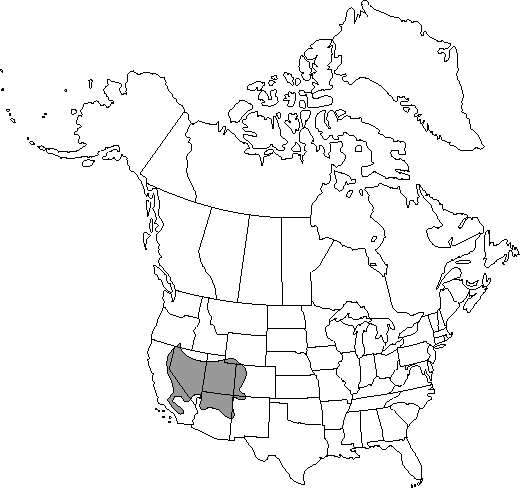Ephedra viridis
Contr. U.S. Natl. Herb. 4: 220. 1893.
Shrubs erect, 0.5–1 m. Bark gray, cracked and irregularly fissured. Branches alternate or whorled, rigid, angle of divergence about 30°. Twigs bright green to yellow-green, becoming yellow with age, not viscid, ridges between longitudinal grooves barely papillate, smooth; internodes 1–5 cm. Terminal buds conic, 1–2 mm, apex obtuse. Leaves opposite, 2–5 mm, connate to 1/2–3/4 their length, not photosynthetic; bases thickened, brown, persistent, becoming hard, enlarged, and black; apex setaceous. Pollen cones 2–several at node, obovoid, 5–7 mm, sessile; bracts opposite, 6–10 pairs, light yellow and slightly reddened, ovate, 2–4 × 2–3 mm, membranous, slightly connate at base; bracteoles slightly exceeding bracts; sporangiophores 2–4 mm, 1/4–1/2 exserted, with 5–8 sessile to nearly sessile microsporangia. Seed cones 2–several at node, obovoid, 6–10 mm, sessile or on short, scaly peduncles; bracts opposite, 4–8 pairs, ovate, 4–7 × 2–4 mm, membranous or papery, with yellow center and base, margins entire. Seeds 2, ellipsoid, 5–8 × 2–4 mm, light brown to brown, smooth. 2n = 28.
Phenology: Coning spring.
Habitat: Dry rocky slopes and canyon walls
Elevation: 800–2500 m
Distribution

Ariz., Calif., Colo., Nev., N.Mex., Oreg., Utah, Wyo.
Discussion
Selected References
None.